To quote Monty Python…. “And now for something completely different”. A Tissot Seastar Electronic.
(Click pictures to enlarge)
From the front there is little to distinguish this Tissot Seastar from many of its 1970’s stablemates. The word ‘Electronic’ on the dial is a clue that there is something different going on here, and opening the caseback reveals an electronic or transistorised calibre, the ESA cal. 9154 Dynotron.
Transistorised watches form an interesting chapter in wristwatch history. They were first introduced between the true electric watches of the 1950’s, such as the Hamilton 500, and the earliest quartz watches which appeared on the market in 1967.
They can be thought of as hybrid calibres in that they have a balance, hairspring and regulator just like a mechanical calibre, but the mainspring is replaced by a battery and an electronic module. The obvious advantage is that being battery powered they never need to be wound, but also the power from the battery remains constant unlike the torque from a mainspring which varies depending on the state of wind.
To say that the watch has a traditional balance assembly isn’t exactly true, here is a picture of the balance suspended on a balance tack.
The balance wheel consists of two discs which pass above and below the induction coil on the electronic module as the balance rotates. On each disc are two magnets which are used to convert the electric charge from the induction coil into electromagnetic energy. You can see the magnets on the lower disc in the picture above, the upper disc has two identical magnets on the underside.
To compensate for the weight of these four magnets, the lower disk also has a counterweight (see inset). As the balance wheel has to be poised to minimise positional errors, just like a traditional balance wheel, several holes are drilled into the counterweight to achieve this.
At the heart of the calibre is the electronic module, which consists of a stop contact, a transistor, two capacitors, a resistor, and two induction coils. Although it looks like a single induction coil it is actually two coils wound together, one is connected to the base contact of the transistor and the second to the emitter.
Here is how it works. The key to the circuit is the transistor which acts as a switch. As the first pair of magnets on the balance wheel pass over the induction coils and a positive current is induced in the coil connected to the base of the transistor. This current effectively ‘opens’ the transistor and allows a larger flow oc current from the capacitor/battery through the transistor and down through the second induction coil.
While this is happening the balance rotates further and the second pair of magnets are over the coils just as the second coil is charged which repels the magnets, giving an electromagnetic push to the balance wheel. When the balance returns in the opposite direction, the first pair of magnets induce a negative current in the coil which ‘closes’ the transistor, cutting the power from the battery.
The system is undoubtedly ingenious and it is a shame that this invention, along with many others, was effectively “kicked into the long grass” with the introduction of quartz watches. You still see a few of these watches around, but they aren’t really that collectible due to the lack of available spare parts and difficulty of repair.
I bought the Tissot in a non-running state which was a bit of a gamble, but I did have another watch with the same calibre which I could use as a donor, so I was confident that I would be able to make one good watch out of the two.
The original hands were pretty tired so I found some suitable replacements, and after cleaning the case, fitting a new crystal and battery, the restoration was complete.
Rich.

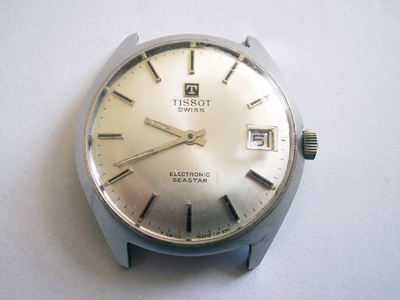
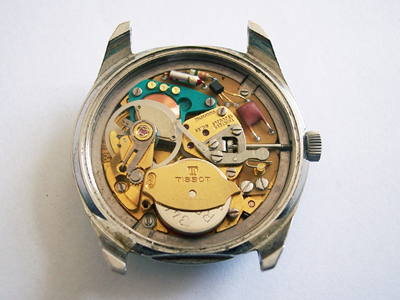
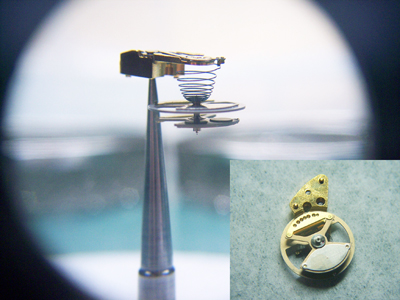
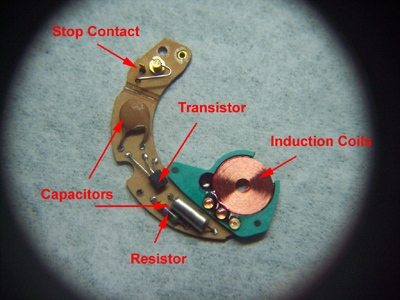
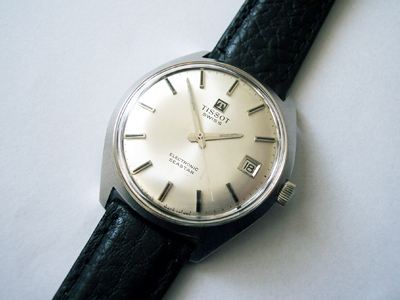
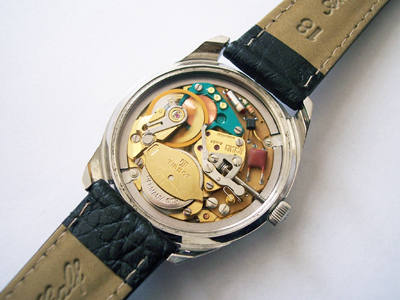
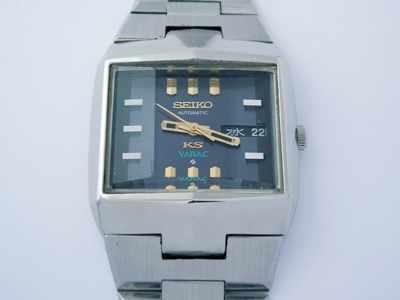
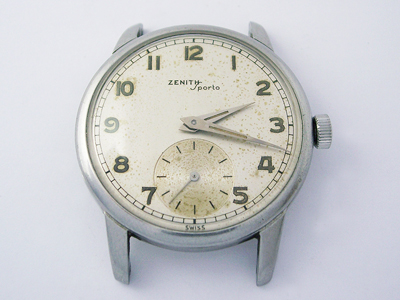
Thank you for posting this information. I have a Zodiac “Spacetronic” that uses this movement and was curious about what it actually IS…